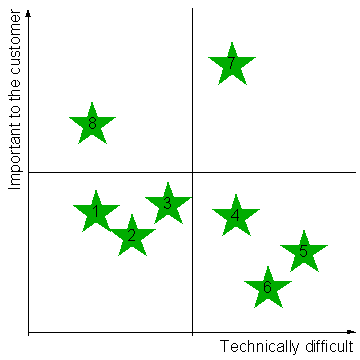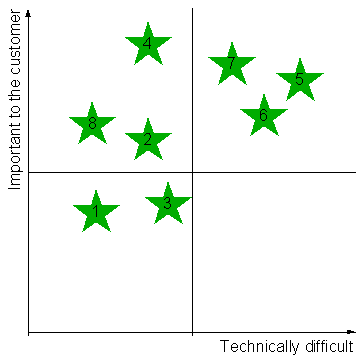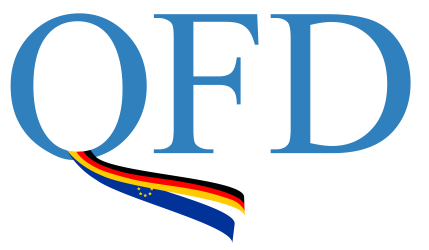A symposion organized by BIFOA (Betriebswirtschaftliches Institut für Organisation und Automation an der Universität Köln)
General
Quality Function Deployment (QFD) is a technique used in Japan and USA for decades now to establish communication channels and establish a level of common understanding between customers and technicians.
QFD is of the method of choice for companies such as Hewlett-Packard and Anderson Consulting, among many others from various areas, to define appropriate levels of functionalities for their products and services. For reasons that are difficult to assess, it is not yet commonly used in Germany (and possibly other countries of Europe). Yet its proven benefits include the ability to distinguish between features that are technically feasible and those that are needed by the customer.


This was demonstrated in several studies presented at the symposium, and is common practice within several industries in Japnn and USA.
The Situation in Europe
Despite the apparant advantages of the approach, this practice still isn’t widely adopted in Europe. Several isolated spots exist, such as with Hewlett-Packard and Boehninger Mannheim, but certainly not (yet?) as a mainstream technique. The reasons why Europe is late, and what makes it more difficult for Europeans than for other folks to adopt that technique, has been widely discussed.
QFD is a technique that creates common understanding between different views. It’s most common application is to reconciliate the standpoints of the customer with those of the design engineer („1st House Of Quality“, see also Figure 1 and Figure 2). This requires a cultural change that replaces authority by responsibility, command by cooperation, belief by inquiry, and this seems in European industries less developed than in some oversea countries. Also, QFD is related to process management and process control, and again, here Europes is not on the forefront of innovation.
Is QFD applicable in the services industry?
QFD has been very successfully applied for software product development, but no examples have been cited at the symposium that illustrate its usefulness for service definitions. The author knows among other of an example conducted for DEC’s Multivendor Customer Service that proved to be helpful in defining the service portfolio, but its real power is deployed only if firmly connected to the project management methodology used wihin the company, such as demonstrated by Boehninger Mannheim and Hewlett Packard.
Recommendation
For the UNISYS Proposal Centre, QFD offers very interesting potential benefits: If time is scarce, and not everything is known about a customer that we plan to offer a project proposal, and a feasibility study is needed (as mandated per the world wide ISG BID process), the QFD approach could save
- Time for designing the proposal
- Effort for conducting a feasibility study
- Reduce costly features elsewise included in the offer
- Thus also reduce the costs of the proposed solution
- Enhance the quality of the offer by focusing it to the customers need
- Thus finally increase our chances to win
All this looks promising enough to justify serious trials.
In order to support such trials, the Proposal Centre will offer moderated QFD sessions, either by our own quality consultants, or by experienced moderators from outside UNISYS.
Bericht von Dr. Fehlmann, Euro Project Office AG
